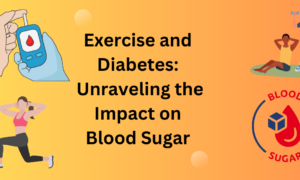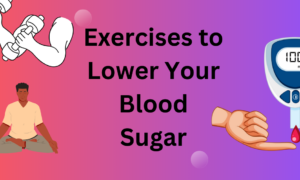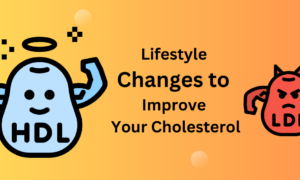Healing is a natural process that our bodies experience following injury, illness, or physical strain. Although external elements like nutrition, sleep, and lifestyle are important, the biological process of healing is fundamentally based in our genetics. Each individual heals in a unique manner because of differences in their genetic composition, influencing aspects like wound healing, muscle repair, and immune reaction. Thanks to progress in genetic studies, tailored recovery strategies are now achievable, aiding people in enhancing their healing journey according to their DNA.
Understanding the Biology of Healing
Healing is a complex biological process that involves multiple systems working together. It can be categorized into different types:
- Tissue Repair and Regeneration – The body repairs damaged tissues through cell division and protein synthesis.
- Wound Healing – A multi-stage process involving clotting, inflammation, tissue formation, and remodeling.
- Muscle Recovery – After exercise or injury, muscles go through a repair cycle driven by protein synthesis and inflammation control.
- Neurological Recovery – The brain and nervous system heal through neuroplasticity and cellular repair mechanisms.
At its core, healing depends on the efficiency of biological mechanisms regulated by genes. Understanding the role of DNA and recovery planning can help tailor better recovery approaches for individuals.

The Role of Genetics in Recovery
Each person’s genetic code influences how efficiently their body heals. Some people recover faster from injuries, while others take longer due to genetic differences in key areas such as:
1. Inflammation Response
Inflammation is the body’s instinctive reaction to injury. Some genes control the creation of inflammatory proteins such as cytokines. People exhibiting elevated inflammation gene expression might undergo extended recovery times, whereas those with reduced levels tend to heal faster.
2. Collagen Production
Collagen is a crucial protein for tissue repair. Genetic variations determine how well the body produces and organizes collagen. Those with strong collagen-producing genes tend to heal wounds, ligaments, and muscles more efficiently.
3. Muscle Repair and Growth
Some genes control muscle fiber composition, affecting how muscles repair after exertion or injury. People with genes favoring fast-twitch muscle fibers may recover differently from those with slow-twitch muscle fibers.
4. Pain Sensitivity and Endorphin Release
The perception of pain has a genetic component. Certain people possess greater natural pain tolerance because of differences in their opioid receptor genes. This can influence a person’s recovery experience and the techniques they require for managing pain.
By analyzing an individual’s DNA and recovery planning, scientists can predict their healing tendencies and suggest better recovery techniques suited to their genetic makeup.
Personalized Recovery Plans Based on DNA
Recent progress in genetic testing enables tailored recovery approaches. DNA analysis can uncover genetic tendencies that influence recovery, resulting in tailored strategies in the subsequent areas:
1. Nutrition and Recovery
Genetic differences influence how the body metabolizes nutrients essential for healing. For example:
- Some people have a genetic predisposition to Vitamin D deficiency, which affects bone healing.
- Variations in iron metabolism genes impact red blood cell production and oxygen delivery to tissues.
- The ability to synthesize omega-3 fatty acids, crucial for reducing inflammation, varies among individuals.
Personalized nutrition plans based on genetic data can optimize recovery by ensuring individuals get the right nutrients.
2. Exercise Recovery Strategies
Athletes and fitness enthusiasts benefit greatly from understanding their genetic recovery profile. DNA testing can reveal:
- The body’s ability to clear lactic acid.
- Predisposition to muscle soreness (DOMS – Delayed Onset Muscle Soreness).
- Rate of muscle fiber repair and growth.
This allows for tailoring workout schedules, rest periods, and recovery protocols to individual needs.
3. Sleep and Healing
Sleep is essential for recovery, and genetics influence sleep quality. Variations in sleep-regulating genes impact:
- How long and deeply a person sleeps.
- Susceptibility to sleep disorders like insomnia or restless sleep.
- The efficiency of growth hormone release during sleep, which is crucial for tissue repair.
Understanding these factors helps in creating sleep routines that enhance genetics and recovery efficiency.
4. Medication and Pain Management
Not all individuals have the same reaction to pain medication. Genetic differences influence the efficiency with which the body metabolizes pain relievers and anti-inflammatory medications. Tailored recovery strategies may involve selecting medications that align with a person’s genetic profile, minimizing side effects and enhancing pain control.

The Future of Genetics in Recovery Science
As research in genetics and recovery advances, new technologies and treatments emerge that further personalize healing. Some promising developments include:
1. Regenerative Medicine
Researchers are investigating methods to improve the body’s inherent healing capabilities by utilizing stem cells, gene therapy, and tissue engineering. These methods have the potential to transform the healing process from serious injuries.
2. Wearable Tech and Biometrics
Devices that monitor biomarkers like inflammation levels, heart rate variability, and oxygen saturation allow for real-time adjustments to recovery plans.
3. AI-Driven Recovery Coaching
AI-powered systems can evaluate genetic information and live biometric data to suggest tailored recovery strategies, enhancing sleep, nutrition, and activity levels.
Conclusion
Recovery is a process that varies greatly from person to person and is shaped by genetic factors and mechanisms of recovery. The healing biology consists of intricate systems, each influenced by genetic differences. Through genetic knowledge, people can create tailored recovery plans that fit their specific DNA characteristics. Whether it’s enhancing nutrition, adjusting exercise plans, boosting sleep quality, or effectively managing pain, a DNA and recovery planning strategy guarantees that healing becomes more effective and customized to individual requirements. As genetic research progresses, the future of recovery science is shifting towards personalized medicine, allowing each person to receive optimal care tailored to their specific genetic makeup. Grasping and utilizing these insights can result in quicker, more efficient recovery for all.





















